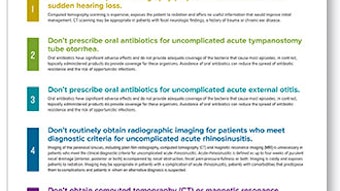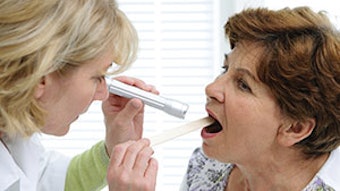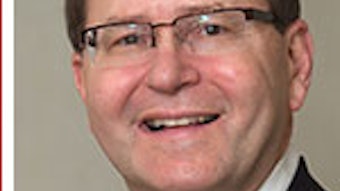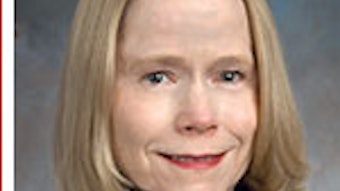Society of University Otolaryngologists meeting a successExpanded from the print edition
The annual meeting of the Society of University Otolaryngologists (SUO) took place in Chicago, IL, November 7-9, 2014. The meeting was combined with the Association of Academic Departments of Otolaryngology and the Otolaryngology Program Directors Organization.
The annual meeting of the Society of University Otolaryngologists (SUO) took place in Chicago, IL, November 7-9, 2014. The meeting was combined with the Association of Academic Departments of Otolaryngology and the Otolaryngology Program Directors Organization. As the delegate representing the AAO-HNS Sections for Residents and Fellows-in-Training, I was fortunate to attend this highly practical and influential meeting presented under the leadership of Scott P. Stringer, MD.
In preparations for Chicago, Barry M. Schaitkin, MD, advised me on the impressive level of engagement of this audience—he was right. The first presentation, “The Next Accreditation System Now” led by Sukgi S. Choi, MD, Michael J. Cunningham, MD, and Pam Derstine, PhD, opened the meeting on a lively, exciting tone. The presentations that followed were also highly applicable to the current and future states of our training programs. The audience—mostly program directors, department chairpersons, and academic faculty with an interest in education—had insightful, no-holds-barred comments and questions for each of the panels. These discussions were often as educational and stimulating as the prepared material. New this year, residents participated on panels to offer a trainee’s perspective. “Social Media in Residency” (led by Stacey T. Gray, MD) with Elliot D. Kozin, MD, and Kara Davis, MD; and “Innovations in Resident Quality Improvement Training” (led by Mark K. Wax, MD) with Michael Kohanski, MD, PhD.
Under the sponsorship of Dr. Stringer, I was invited to organize the first resident-led panel, “What Residents Want You to Know: Resident Perspective on Training.” The 50-minute panel was organized to give resident and fellow perspectives on “hot topics” presented elsewhere during the meeting. Dr. Kozin started the panel with an in-depth look at social media analytics and Otomatch.com and how the site may be influencing medical student perceptions of our individual programs and our specialty. Otomatch.com is an unregulated open forum which medical students frequent for insight into otolaryngology residency and the application process. There were more than 2 million views from 2001 through 2014 with viewership peaking during match periods, according to Dr. Kozin’s presentation. The most popular threads are related to interviews and program-specific questions.
Next, I presented a few thoughts and pieces of literature on “Distracted Doctoring” with a focus on the increasing use of technology, including smartphones and EMRs, on our clinical learning environment. The definition of appropriate use of technology appears to be constantly changing, and many feel the next generation of physicians is being setup for increased burnout, expanded avenues of liability, and decreased efficiency. There exists an increasing daily conflict between patient care tasks, such as responding to emails and interacting with the EMR, versus aspects of attentiveness such as critical curiosity, presence, and attentive observation. Trainees today have never known a less “viral,” more reflective environment; perhaps it is a challenge to our specialty to define what is necessary and appropriate before someone else does so for us?
Nicole C. Schmitt, MD, then shared “What Fellows Want to Know Beyond Surgery and Science.” Specifically, she discussed the unique role of the fellow as both a giver and receiver of feedback and constructive criticism. She highlighted research as a crucial mechanism and opportunity to learn how to receive and respond to professional criticism and evaluation. Processes such as peer review, grant writing, and journal clubs were proposed as important ways of encouraging feedback-seeking behavior.
Lastly, Kanwar Kelley, MD, JD, presented the results of the AAO-HNS/F Section for Residents and Fellow-in-Training 2014 Annual Survey. Highlights from this year’s results include the following:
- 81 percent of trainees are using electronic materials for exam preparation; 68 percent reported use of an AAO-HNS/F resource, of which AcademyQ was the most popular.
- The average amount of reported debt for trainees continues to increase; nearly 38% of respondents reported greater than $200,0000, including ~2% over $400,000.
- 70 percent of respondents either plan to pursue fellowship or have already matched, with Facial Plastics and Head & Neck being the most popular choices.
- Nearly 25 percent of respondents reported the ethnic or gender diversity of a program (faculty, residents, or both) as having a direct effect on its position in the residency match rank list.
Overall, the panel was well attended, and we hope a similar opportunity will be included in future programming.
Finally, I am proud to report that an ad-hoc committee of residents and fellows will be formed within SUO. The purpose will be to make recommendations for increasing resident and fellow engagement and participation. We are recruiting interim membership, and I warmly welcome anyone with interest to contact me (davisks@upmc.edu).
On behalf of the AAO-HNS/F Section for Residents and Fellows-in-Training, I thank Dr. Stringer for his dedication to trainees and his advocacy for our specialty. Otolaryngology residents and fellows are fortunate to have the commitment of the Society of University Otolaryngologists to our future.









